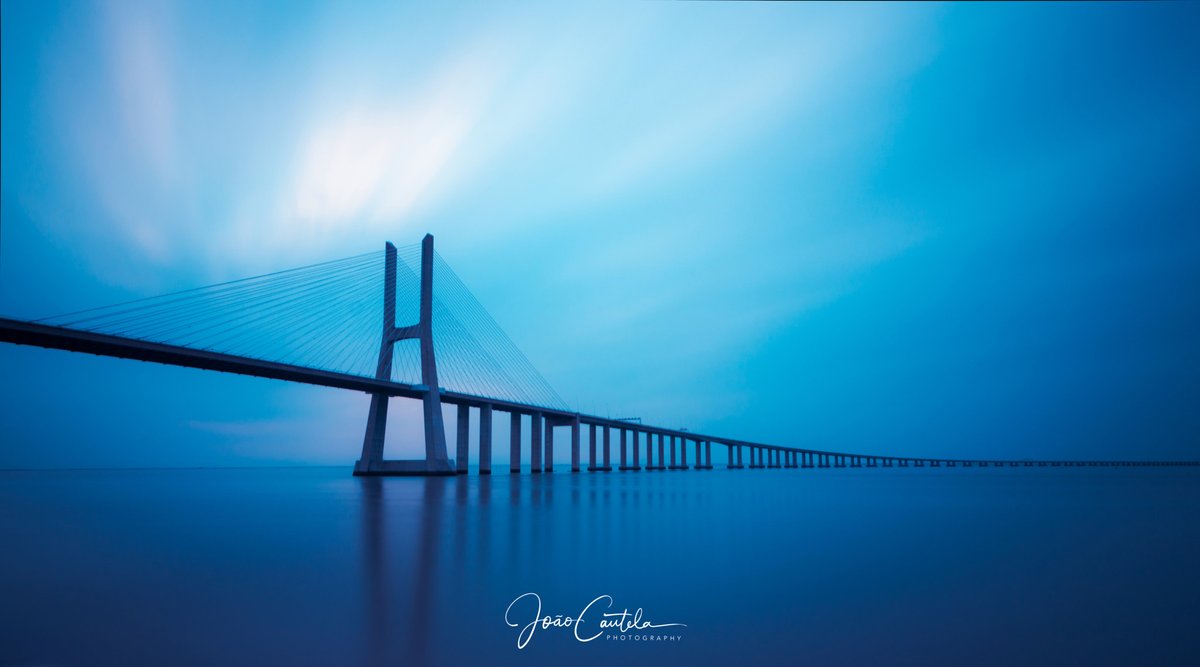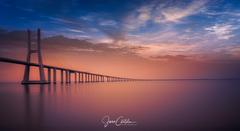
Vasco da Gama Bridge: Visiting Hours, Tickets, and Complete Travel Guide to Lisbon’s Modern Marvel
Date: 14/06/2025
Introduction
The Vasco da Gama Bridge is a defining feature of Lisbon’s skyline and a proud symbol of Portugal’s legacy of innovation and maritime exploration. Spanning 17.2 kilometers across the Tagus River, it is one of Europe’s longest bridges and a vital connector between Lisbon’s northern districts and the southern towns of Montijo and Alcochete. Completed in 1998 to alleviate traffic from the older 25 de Abril Bridge and to coincide with the Expo 98 World Exposition, the bridge is a testament to modern engineering and national ambition. Named after the legendary explorer whose 1498 voyage to India marked the pinnacle of Portugal’s Age of Discovery, the bridge stands as both a critical infrastructure project and an emblem of the country’s enduring spirit.
This guide provides a detailed overview for visitors: from the bridge’s origins and technical marvels to tips for the best viewpoints, practical visiting information, nearby attractions, and answers to frequently asked questions. Whether you’re an engineering enthusiast, a history buff, or a traveler seeking scenic vistas, the Vasco da Gama Bridge is an unmissable highlight of Lisbon. For further details, visit LisbonGo, Visit Lisboa, or Portugal Visitor.
Table of Contents
- Introduction
- Historical Context and Construction
- Architectural and Engineering Highlights
- Economic, Social, and Environmental Impact
- Visitor Information and Practical Tips
- Best Viewpoints and Nearby Attractions
- Special Events and Photography
- Frequently Asked Questions (FAQ)
- Key Technical Specifications
- Summary and Recommendations
- Sources
Historical Context and Construction
Origins and Purpose
By the early 1990s, Lisbon’s sole major crossing, the 25 de Abril Bridge, faced heavy congestion. To support urban growth and improve access between Lisbon and southern Portugal, the government initiated plans for a second Tagus crossing. In 1991, an international tender attracted global engineering and construction expertise. In 1994, Lusoponte was awarded the contract to design, build, and operate the bridge, with the goal of completing it in time for Expo 98—a world fair showcasing Portugal’s modernization and commemorating 500 years since Vasco da Gama’s journey to India (Secil Group, LisbonGo).
Construction Timeline and Milestones
Construction began in January 1995 and was completed in March 1998, employing 3,300 workers and utilizing advanced technologies, including satellite coordination for precise alignment. The bridge opened to traffic in time for Expo 98, reinforcing Lisbon’s status as a forward-thinking European capital (LisbonGo).
Architectural and Engineering Highlights
Design and Structure
- Total Length: 17.2 km (10.7 miles), making it one of Europe’s longest bridges.
- Sections: The bridge consists of five main parts: northern viaduct, expo viaduct, cable-stayed main span, central viaduct, and southern viaduct.
- Main Span: The cable-stayed section features a 420-meter central span supported by twin H-shaped pylons rising to 150 meters, with 47 meters of clearance for river traffic.
- Foundations: Deep foundations reach up to 95 meters below sea level using massive pre-cast concrete units (Secil Group).
Technological Innovations
- Seismic Resistance: Engineered to withstand earthquakes significantly stronger than Lisbon’s 1755 disaster, with features like shock absorbers and flexible deck pylons (LisbonGo).
- Wind Endurance: Withstands winds up to 250 km/h (155 mph).
- Environmental Safeguards: Construction methods minimized ecological impact on the Tagus estuary, including extending viaducts inland and tilting lamp posts to reduce light pollution (Secil Group).
Economic, Social, and Environmental Impact
- Financial Model: Built under a build-operate-transfer (BOT) model, investment exceeded $1.1 billion. Lusoponte collects tolls on both the Vasco da Gama and 25 de Abril bridges for 40 years (LisbonGo).
- Urban Development: The bridge spurred the transformation of the Parque das Nações district into a thriving center for culture, business, and leisure.
- Environmental Care: Construction protected the Tejo Estuary Natural Park, relocating wildlife and restoring habitats, demonstrating a commitment to sustainable development.
Visitor Information and Practical Tips
Access and Hours
- Bridge Access: The bridge is a motorway open to vehicles 24/7; there is no pedestrian or cycling access for general safety.
- Tolls: Southbound vehicle crossings incur tolls; northbound is typically free (Brisa).
- No Tickets Required: Viewing the bridge from public areas is free; tolls apply only to vehicles (Visit Lisboa).
Getting There
- By Car: Part of the A12 motorway, accessible via the 2ª Circular or Eixo Norte-Sul. Tolls apply for southbound crossings.
- By Public Transport: Oriente Station in Parque das Nações provides metro, regional train, and bus connections close to the bridge’s northern approach (CP Comboios de Portugal).
- By Taxi/Rideshare: Widely available and convenient for reaching the best viewpoints.
Accessibility
- The Parque das Nações waterfront promenade and other public areas offer flat, wheelchair-friendly paths, public restrooms, and shaded seating.
Best Viewpoints and Nearby Attractions
Top Viewing Spots
- Parque das Nações Promenade: Unobstructed views ideal for sunrise/sunset photography.
- Passeio dos Heróis do Mar: Scenic riverside for panoramic shots.
- Telecabine Lisboa (Cable Car): Aerial views of the bridge and city (Telecabine Lisboa).
- Torre Vasco da Gama: Observation deck with 360-degree city and river vistas.
Other Nearby Attractions
- Oceanário de Lisboa: World-class aquarium, open daily (Oceanário de Lisboa).
- Vasco da Gama Shopping Center: Dining, shopping, and a rooftop terrace.
- Gardens and Parks: Jardins da Água and Parque Tejo for relaxation and picnics.
- Cultural Sites: Expo 98 legacy venues and contemporary architecture abound.
Special Events and Photography
- Events: On rare occasions, such as the Lisbon Marathon, the bridge closes to vehicles and opens to pedestrians (EDP Lisbon Marathon).
- Festivals: The bridge is illuminated and features in citywide celebrations, including New Year’s Eve fireworks.
- Photography Tips: Visit during golden hour (early morning or late afternoon) for the best lighting. A wide-angle lens is recommended for capturing the bridge’s span; use a tripod for night shots.
Frequently Asked Questions (FAQ)
Q: Can I walk or cycle across the Vasco da Gama Bridge?
A: No, the bridge is reserved for motorized traffic, except during special events.
Q: Are there tolls for crossing the bridge?
A: Yes, tolls apply for southbound vehicles. Pedestrians and those viewing from nearby areas do not require tickets.
Q: What is the best way to see the bridge?
A: From the Parque das Nações promenade or via the cable car, southern shore viewpoints (Montijo/Alcochete), and observation towers.
Q: Is the bridge open year-round?
A: Yes, it operates 24/7 for vehicular traffic.
Q: Are there guided tours?
A: While there are no official tours of the bridge itself, many city and architecture tours include prime viewpoints in their itineraries.
Key Technical Specifications
- Total Length: 17.2 km (10.7 miles)
- Main Span: 420 m (1,378 ft)
- Pylon Height: 145–150 m (476–492 ft)
- Deck Height Above Water: 47 m (154 ft)
- Number of Lanes: 6 (expandable)
- Foundation Depth: Up to 95 m (312 ft)
- Design Life: 120 years
- Wind Resistance: Up to 250 km/h (155 mph)
- Seismic Resistance: Exceeds standards for the 1755 Lisbon earthquake
- Construction Period: 1995–1998
- Cost: Approx. US$1.1 billion
For more technical details, visit Britannica, Portugal Visitor, or Lusoponte.
Summary and Visitor Recommendations
The Vasco da Gama Bridge is far more than a transportation link; it is a symbol of Lisbon’s progress and Portugal’s maritime legacy. While you cannot walk or cycle across, the surrounding promenades, parks, and observation decks provide memorable perspectives and excellent photo opportunities. Combine your bridge visit with nearby attractions in Parque das Nações, enjoy world-class dining and shopping, and take advantage of accessible public transit. For a truly local experience, check for special events when the bridge may open to pedestrians.
To make the most of your visit, consult up-to-date resources, consider guided tours for historical context, and use public transport or rideshare to reduce your environmental footprint. The Vasco da Gama Bridge is a must-see for anyone interested in engineering, architecture, or Lisbon’s vibrant modern landscape.
Sources
- This guide is informed by authoritative resources and official visitor platforms. For more, see:
Ready to explore Lisbon like a local? Download the Audiala app for personalized travel guides, insider tips, and real-time updates on Lisbon’s must-see sights and events.



























































